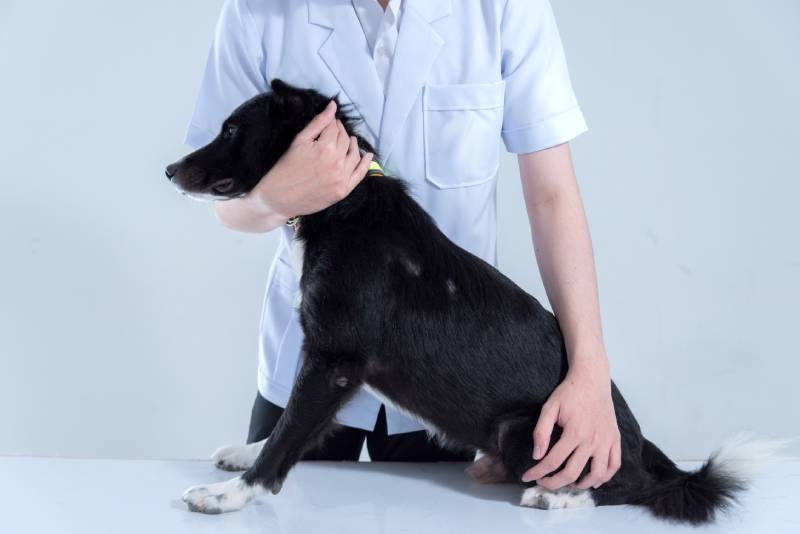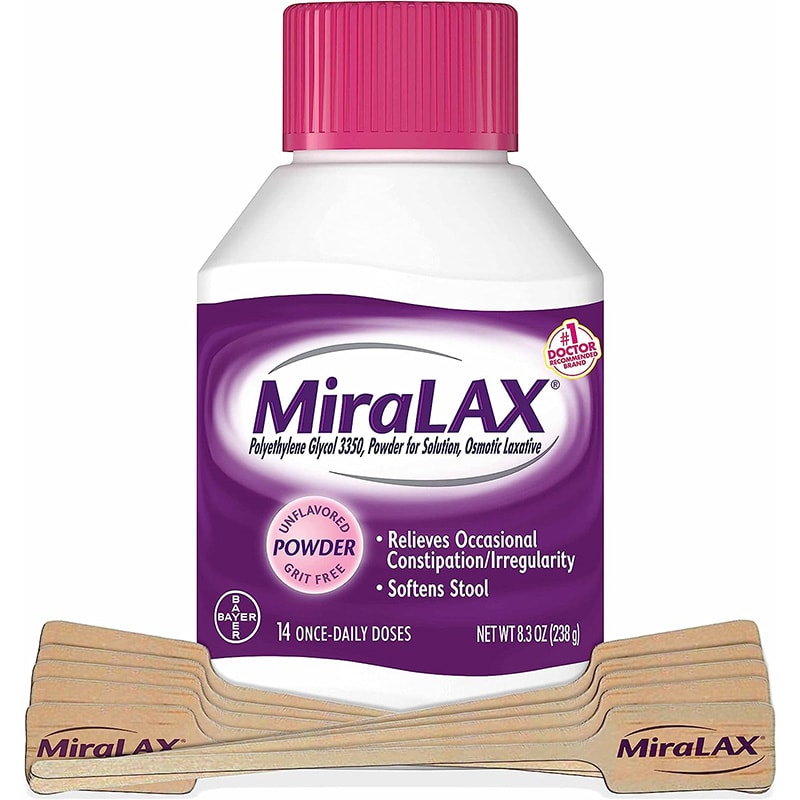Septic Arthritis in Dogs: Signs, Causes, and Treatment (Vet Answer)

Updated on

Click to Skip Ahead
Introduction
When the word arthritis is mentioned, many will already have an idea of inflammation or pain in the joint or multiple joints. But what is septic arthritis? In this article, we will get a clearer picture of what this diagnosis is and how it differs from the stand-alone arthritis diagnosis.
We will see how septic arthritis presents, and what it means if a dog is afflicted with this disease process. Let’s get started!
What Is Septic Arthritis?
The difference between arthritis and septic arthritis is that by definition, arthritis by itself is simply inflammation, stiffness, and swelling within a joint. Septic arthritis, which can also be referred to as “infectious arthritis” or “bacteria arthritis”, differs in that it is specifically caused by an infectious organism that infects the space of a joint. The infectious agent in these cases is most commonly bacteria, but there could also be other agents such as a virus or fungus.
Septic arthritis typically affects only one joint, but it is possible for an animal to have more joints affected at once. In general, this disease is not seen very commonly, but when it does occur, it more often afflicts medium to large dog breeds such as German Shepherds, Doberman Pinschers, or Labrador Retrievers. This disease can occur in any age of dog and when present, progresses quickly.
In a joint affected by septic arthritis, there is a lot of inflammation in the joint due to the infection as well as damage to the cartilage layer which can potentially affect the long-term range of motion and usage of the joint.

What Are the Signs of Septic Arthritis?
- Lameness in affected leg
- Swelling of affected joint
- Often very painful in affected joint
- Heat on or around affected area
- Decreased range of motion
- Systemic signs such as fever, stiffness, lack of energy, not wanting to eat
It is important to note that if signs of septic arthritis are seen or suspected, time is of the essence. Not only is a dog in pain and their mobility minimized, but the response to treatment is often better when started early in the disease process. In addition, long-term joint health will be better when treated promptly.
What Are the Causes of Septic Arthritis?
As mentioned, septic arthritis is due to an infectious organism, most notably bacteria but other causes such as a fungal or viral source may occur. So how does this infectious agent get into and affect the joint itself? This can occur in a variety of ways. When present, it is more typically caused by some kind of injury or trauma in or close to the joint. This could be due to a “penetrating injury” such as a bite wound or a traumatic injury that punctures the joint. Another source could be a surgery or procedure in or around the joint in question. Some iatrogenic causes (an accidental injury due to medical or surgical care) include joint injections, especially in regards to steroids, or surgery that opens or compromises the joint space.
Additionally, the hematogenous spread (infection spread via the bloodstream) of an agent can occur which allows the agent to reach and take up shop in the joint. Some additional risk factors that could make this more likely might include other diseases such as diabetes mellitus, Addison’s disease, or immunosuppression of the body. Pre-existing osteoarthritis or other problems or damage within the joint also can make it more susceptible to becoming infected.

How Do I Care for a Dog with Septic Arthritis?
For a dog that has the signs above, a veterinarian will want a complete history and will conduct a thorough physical exam. Bloodwork may or may not show anything significant, but X-rays may show changes depending on the timeline and severity of the illness. Early on in the disease process, this could appear as extra fluid around the joint (joint effusion) or thickened areas of the joint. If the disease has been present for some time, X-rays may show bone destruction, irregular joint space, and other potential degenerative joint disease changes.
What is most helpful for the diagnosis is taking a sample of the affected joint fluid to be analyzed, a process termed arthrocentesis. This is likely to be done under sedation or anesthesia, and the joint fluid samples are taken before a dog starts antibiotics. In some cases, the fluid samples may have obvious indicators such as the visible presence of pus. In any event, synovial fluid analysis will be conducted by inspecting the fluid under a microscope. In positive cases, there will be a very high white blood cell count seen in the joint fluid. A definitive diagnosis can be made if a specific type of white blood cell, a neutrophil, is present with bacteria. A synovial fluid culture, if positive, will determine what infectious organism is present, and a synovial fluid sensitivity would see which medication will be best for treatment.
Other additional tests may include blood and urine cultures, or a synovial biopsy to rule out immune-mediated joint disease.
Treatment of septic arthritis should be multifaceted. First would be the correct medication to treat the infectious cause. For example, in bacterial infections, this would be antibiotics, which may be started out being given intravenously originally and then later switched to oral medications. The antibiotic choice will likely be a broad spectrum variety that could change depending on the culture and sensitivity results. Antibiotics are likely to be continued for at least 2 weeks after the signs have gone away, but they may likely need to be given more long term, such as in the 4–8-week range. Joint lavage or injecting the area with a solution and then draining it out to help remove the infection may also be done.
In more severe cases, surgery may also be necessary, which can range from arthrodesis (joint fusion) to excision arthroplasty (reconstructing a joint) or in extreme cases, amputation.
For follow-up care to medical treatment or surgery if needed, alternating between hot and cold packing may help increase blood flow while also decreasing swelling. Activity restriction and rest will be implemented until the signs are gone. In addition, physical therapy at the discretion of the veterinarian will likely be implemented. This could include passive range of motion exercises or other recommended movements or may include potential dog physical therapy specialists. Dog-safe NSAIDS or other pain medications to decrease inflammation and swelling will be needed in the healing and recovery process.

Frequently Asked Questions (FAQ)
Is Septic Arthritis Contagious?
You may be wondering if septic arthritis can be spread to other dogs, people, or other animals in general. While the sepsis itself can’t be spread to others, it may be possible for the infectious inciting cause to transmit to other animals, including humans. However, while the infectious agent may spread to another, it may not affect the other in the same way and may not progress to sepsis. Regardless, precautions should always be taken to avoid direct contact between the infected bodily fluid of the affected dog and any other animal.
What’s My Dog’s Prognosis?
For dogs afflicted with this disease, prompt diagnosis usually results in a good response to medical treatment. Despite a favorable prognosis for such cases, dogs receiving treatment should be monitored closely. In dogs where the diagnosis takes longer to discover, if the disease process is more advanced, or if they are resistant to medical treatment, the prognosis is poorer, especially in regards to the function of the affected joint. Some potential complications include recurrence or degenerative joint disease in the affected joint.
Conclusion
Septic arthritis is an uncommon, but serious disease in dogs that causes inflammation of the joint due to an infectious process, which is most commonly bacteria. When septic arthritis is detected, time is of the essence, and it is of the utmost importance to have it diagnosed and treated promptly to help your pup have the best prognosis. If you note signs of the disease process or have any cause for concern, asking your dog’s partner in all things health, their veterinarian, would be the next step!
Featured Image Credit: Hryshchyshen Serhii, Shutterstock














